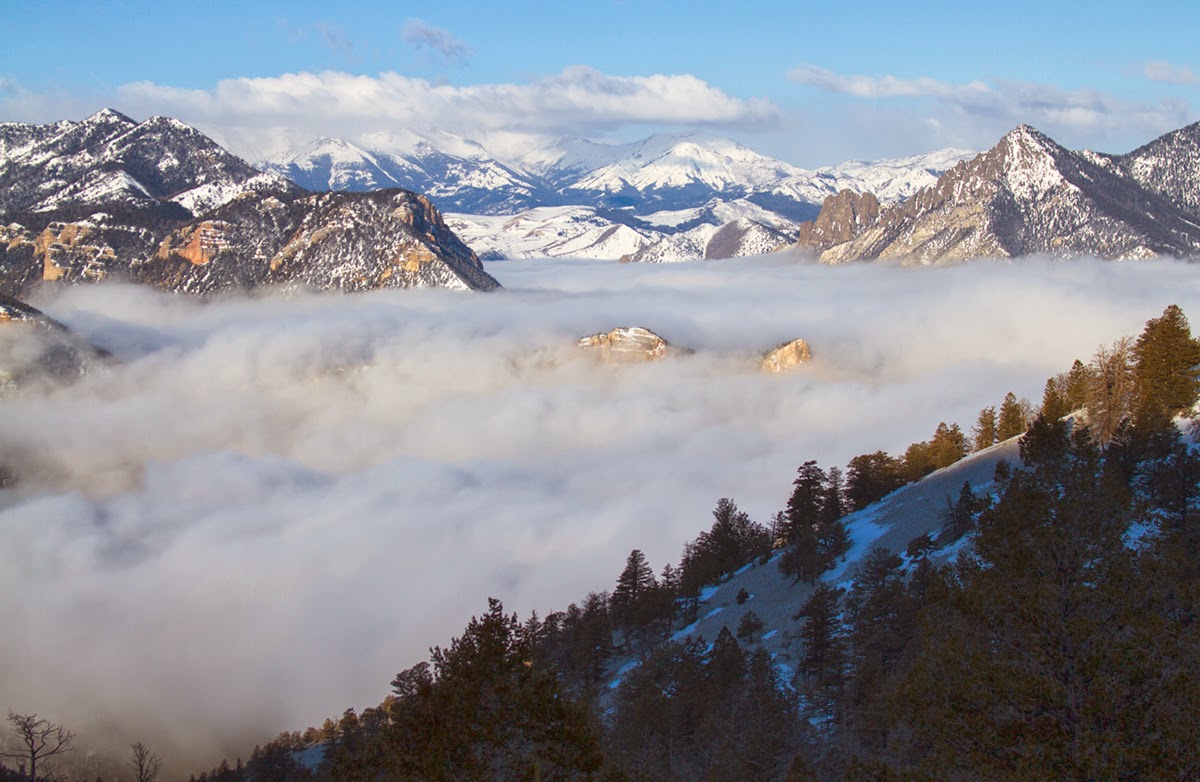Cooke City is only 34 miles from our house as the crow flies. In the winter it takes us about 2 1/2 hours to get there - assuming we even can - because of the Beartooth Mountains between us. Last Monday we left here with the snowmobile trailer in tow and headed up and over Chief Joseph Highway (above) to Pilot Creek Trailhead. There we parked our vehicle and switched to snow machines for the 9 mile ride over closed highways to Cooke City where we would meet the rest of our party.
 The snow pack just got deeper and deeper as we neared Cooke. The snowmobile track "high pointing" this house as we neared town gives you an idea of the snow depth as does the shot below looking down main street back toward Highway 212.
The snow pack just got deeper and deeper as we neared Cooke. The snowmobile track "high pointing" this house as we neared town gives you an idea of the snow depth as does the shot below looking down main street back toward Highway 212. From Cooke we got back on our machines for the 6 mile ride to the wilderness boundary at which point we boot-packed up to the Mt. Zimmer yurt at 9460'. This was to be our home for the next five days.
The yurt holds six people, barely, but two of our group had sustained injuries over the previous few weeks and so we had a comfortable foursome in the small space.
This is our second year making this trip. We thought last year's snow pack was big but it didn't touch what we saw this time around. The 10' walls of the canvas structure were buried, necessitating a pretty good hike down snow steps to enter.
Nor was our weather anything like last year's big sunny days. We received about 18" of new snow while we were there and most days were cloudy and gray. While that meant the photography was somewhat challenged, it made for some absolutely amazing skiing.
Inside the yurt is a wood stove for heat and melting snow for water. A three burner propane stove means meals are easily prepared.
There are three sets of bunk beds around the outer wall. Keeping organized is a must.
 One of the biggest challenges of this year's visit was the trip to the outhouse. The 10' structure was buried under another five feet or so of snow, making the journey to the facility a daunting task!
One of the biggest challenges of this year's visit was the trip to the outhouse. The 10' structure was buried under another five feet or so of snow, making the journey to the facility a daunting task!Thanks to Ken for the two shots in which I appear!










































